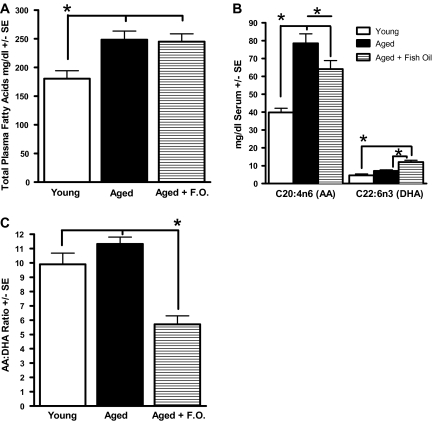Figure 2.
Plasma fatty acids. (A) Total fatty acid mass is lower in the young group compared with the aged rats regardless of diet. (B) Arachidonic acid (AA) is significantly lower in the young group compared with the aged, regardless of diet, and the aged rats on the fish oil (FO) diet have lower AA levels compared with the aged rats on the purified diet. Docosahexaenoic acid (DHA) levels are highest in the aged rats on the FO diet when compared with the aged and young rats on the purified diet. (C) The aged rats that consumed FO had a lower AA/DHA ratio that presumably reflects a less inflammatory diet. Note the lack of a difference between the young and aged rats on the non-FO-supplemented diet. *p < .05.

